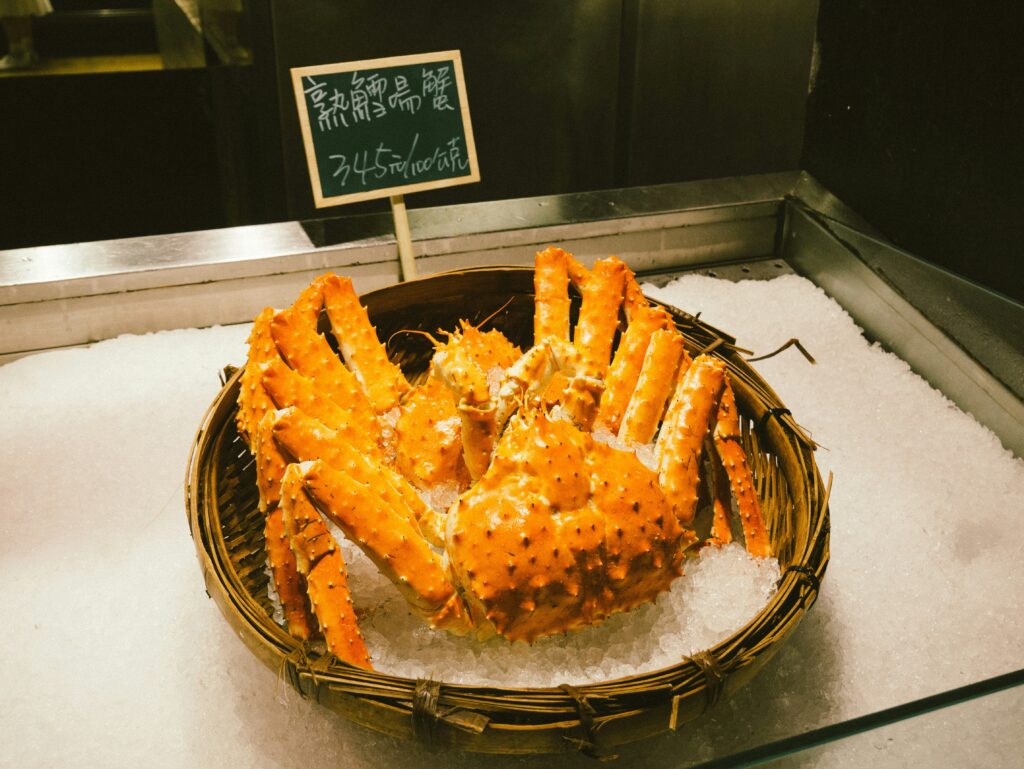Why Crab Cakes Are a Seafood Classic — History Nutrition and Recipes

The Delicious World of Crab Cakes: Traditions, Types, and Healthy Options

Crab cakes are one of the most beloved seafood dishes in America and beyond. For many food lovers, they represent a perfect blend of comfort and elegance: tender lumps of crab meat bound with just enough seasoning and filler to hold together, then pan-seared, baked, or fried into a golden, flavorful patty. Though strongly associated with Maryland and the Chesapeake Bay, crab cakes now appear on menus around the world, adapted into countless variations.
This long-form guide explores everything about crab cakes — their history, how the idea originated, their nutritional value, regional and global types, serving ideas, recipes, and cultural significance. By the end, you’ll not only know the story behind crab cakes but also how to prepare them and appreciate their role in culinary traditions.
1. History of Crab Cakes
Early Roots in Chesapeake Bay
The modern crab cake traces its origins to the Chesapeake Bay area of the United States, primarily Maryland and Virginia. The Chesapeake has long been one of the richest habitats for blue crabs (Callinectes sapidus), a species prized for its sweet, delicate meat. Native American tribes were consuming crab centuries before European settlers arrived. Crabs were roasted, stewed, or eaten fresh from the shell.
When European colonists settled in the Mid-Atlantic, they brought with them traditions of making fish cakes, fritters, and croquettes. These techniques involved mixing seafood with bread, flour, or potatoes, then forming them into patties and frying or baking them. It was only natural that Chesapeake cooks applied the same concept to crab meat.
19th and 20th Century Popularization
By the late 1800s, references to crab patties and similar dishes began appearing in American cookbooks. In the early 20th century, recipes for “crab cakes” started showing up in regional publications. The 1930s marked the point where the term “crab cake” became widely recognized in restaurant menus and home kitchens.
Baltimore, Annapolis, and surrounding towns embraced the crab cake as a local specialty, and tourism helped spread its fame. By mid-century, “Maryland-style crab cake” had become synonymous with quality seafood cooking. Today, it remains a proud symbol of Chesapeake Bay cuisine.
Global Influences
Although the crab cake as we know it is American, similar dishes exist worldwide. Britain has long had fish cakes, Spain and Portugal make croquettes, and Asia features crab-filled dumplings and patties. Modern chefs borrow from these traditions, blending seasonings like ginger, soy sauce, chili, or curry to create innovative versions of crab cakes that reflect global flavors.
2. Nutritional Value of Crab Cakes
Crab meat itself is a highly nutritious seafood, rich in protein and minerals. However, the final nutritional value of a crab cake depends heavily on how it is prepared.
Average Nutritional Profile (per 100g serving)
- Calories: 200–320 kcal
- Protein: 12–18 g
- Fat: 10–18 g (higher in fried versions)
- Carbohydrates: 8–22 g (from breadcrumbs or flour)
- Sodium: 300–650 mg (varies by seasoning and sauces)
- Omega-3 Fatty Acids: 0.2–0.6 g
- Vitamin B12: High — supports nerve and blood health
- Minerals: Zinc, Copper, Selenium (all important for immunity and metabolism)
Health Considerations
- Frying vs Baking: Deep-fried crab cakes are higher in fat and calories, while baked or broiled versions are healthier.
- Allergens: Crab is a shellfish and a common allergen. Anyone with shellfish allergies must avoid crab cakes.
- Mercury: Crab is low in mercury compared to larger fish, making it safer for regular consumption.
- Sodium Watch: Commercial crab cakes and restaurant versions may include high amounts of sodium.
In moderation, crab cakes can be a nutritious meal — especially when baked and paired with fresh vegetables or salad.
3. How the Idea of Crab Cakes Emerged
The invention of crab cakes wasn’t about fancy dining — it was about practicality.
- Stretching Expensive Ingredients: Crab meat is flavorful but costly and delicate. By mixing it with cheap binders like breadcrumbs and egg, cooks could serve more portions from the same amount of crab.
- Texture and Binding: Crab meat on its own is flaky and fragile. A small amount of filler allowed it to form patties that could be fried or baked without falling apart.
- Cultural Parallels: Similar dishes existed in Europe (fish cakes, croquettes) and Asia. The crab cake was simply an American adaptation of this universal idea.
- Social and Economic Factors: Coastal taverns, markets, and small restaurants needed dishes that were portable, affordable, and filling. Crab cakes checked all the boxes.
What started as a practical solution evolved into a regional delicacy, then into a global favorite.
4. Types of Crab Cakes
Crab cakes vary widely depending on the region, cooking method, and cultural influence. Below are the main types:
1. Maryland Crab Cake (Classic)
- Focuses on lump crab meat, minimal filler.
- Lightly seasoned with Old Bay, mustard, and mayonnaise.
- Typically broiled or pan-seared for a delicate finish.
2. Baltimore Style
- Similar to Maryland but often cooked in butter.
- Slightly more filler for structure.
- Richer, heartier, and popular in Baltimore restaurants.
3. Boardwalk Crab Cake
- Found in beach towns along the East Coast.
- More breadcrumbs and filler, deep-fried for a crunchy shell.
- Portable and satisfying, often eaten as street food.
4. Deviled Crab (Florida / Tampa Style)
- Spicy filling with onions, peppers, cayenne, and paprika.
- Often baked inside a breadcrumb shell.
- Strong Cuban and Spanish influence.
5. Asian-Style Crab Cakes
- Uses ginger, soy, sesame oil, and cilantro.
- Binders may include rice flour instead of breadcrumbs.
- Served with chili or soy-based dipping sauces.
6. Mini Crab Cakes / Appetizer Style
- Bite-sized versions, perfect for parties or catering.
- Often baked for convenience.
7. Modern Fusions
- Plant-based versions using jackfruit or hearts of palm.
- Gluten-free binders like almond flour or oats.
- Creative seasonings from curry to harissa.
5. Recipes and Serving Ideas
Classic Maryland Crab Cake (Restaurant Style)
Ingredients (makes 4 cakes):
- 300 g lump crab meat
- ½ cup mayonnaise
- 1 egg, beaten
- 1 tsp Dijon mustard
- 1 tbsp lemon juice
- 1 tsp Old Bay seasoning
- 2 tbsp chopped parsley
- ½ cup breadcrumbs (panko preferred)
- Salt and white pepper
Method:
- Mix mayonnaise, egg, mustard, lemon juice, seasoning, parsley, and breadcrumbs.
- Fold in crab meat gently. Form into patties.
- Chill for 30 minutes.
- Pan-sear in butter/oil for 2–3 minutes per side or broil until golden.
- Serve with lemon wedges and remoulade sauce.
Healthy Baked Crab Cake
Ingredients (makes 6 medium cakes):
- 400 g crab meat
- 2 egg whites
- ½ cup almond flour or gluten-free crumbs
- 2 tbsp Greek yogurt
- 1 tsp lemon zest, 1 tbsp lemon juice
- Chives, dill, salt, and pepper
Method:
- Mix all ingredients, fold in crab gently.
- Shape into cakes and place on a baking tray.
- Bake at 200°C (400°F) for 12–14 minutes.
- Broil for 2 minutes for color.
Sauces and Side Pairings
- Classic: Tartar sauce or remoulade.
- Light: Lemon-dill yogurt sauce.
- Spicy: Chili mayo or sriracha aioli.
- Sides: Coleslaw, fries, salad, roasted potatoes, or grilled vegetables.
6. Cultural Significance
Crab cakes are more than food — they represent identity and pride.
- Maryland Identity: Marylanders take crab cakes seriously. Festivals, competitions, and restaurants all celebrate the dish as a state treasure.
- Tourism and Economy: Chesapeake crab cakes attract tourists, supporting local economies and seafood industries.
- Fusion Food: Around the world, chefs experiment with crab cakes to showcase local flavors while keeping the dish familiar.
- Sustainability Awareness: With blue crab populations under pressure, sustainability has become central. Many restaurants highlight responsibly sourced crab to appeal to eco-conscious diners.
7. Chef Tips for Perfect Crab Cakes
- Use lump crab meat for the best texture.
- Don’t overmix — keep the lumps intact.
- Chill patties before cooking to prevent them from falling apart.
- Dust with panko before frying for extra crispness.
- Serve immediately — crab cakes are best hot and fresh.
8. Sustainability and Sourcing
Blue crab populations rise and fall with fishing pressure, habitat quality, and climate change. For responsible consumption:
- Buy from certified sustainable fisheries.
- Choose regional crabs when possible.
- Support restaurants and brands that practice eco-friendly sourcing.
9. Conclusion
Crab cakes are a dish born of necessity but elevated into a symbol of regional pride and culinary creativity. They embody the balance of tradition and innovation: simple enough to be made at home, yet elegant enough to appear on fine-dining menus.
From their Chesapeake Bay roots to global variations, crab cakes tell a story of history, economy, and taste. They are hearty but refined, practical yet celebratory. Whether enjoyed as a Maryland classic, a spicy deviled crab, or a modern fusion with Asian spices, crab cakes remain one of the most versatile and beloved seafood dishes in the world.
So next time you savor a crab cake, you’re not just eating seafood — you’re tasting centuries of culture, creativity, and craftsmanship.
Expand Your Reading
Discover more content you might enjoy
